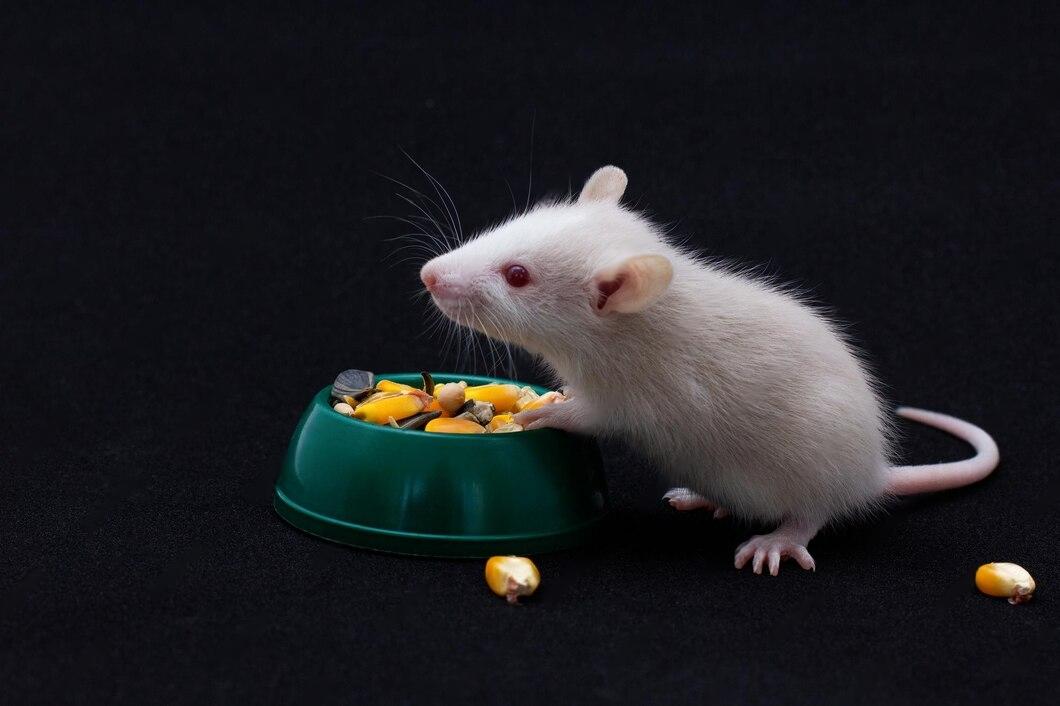Yes, mice eat dog food. They find it nutritious and appealing.
Mice are opportunistic feeders and consume a variety of foods, including dog food. Dog food contains grains, proteins, and fats that attract mice. These small rodents can chew through packaging to access the food. Pet owners should store dog food in airtight containers to prevent infestations.
Keeping feeding areas clean also helps deter mice. Rodents can spread diseases and contaminate pet food, posing health risks. Regularly checking for signs of mice, such as droppings or gnaw marks, is essential. Taking preventive measures can protect your home and pets from unwanted pests.
Mice Dietary Habits
Mice enjoy eating seeds, grains, and fruits. They also like nuts and vegetables. Mice are not picky and will eat almost anything. They often consume bread and cereals. Mice can find food in kitchens and pantries. They also eat pet food, including dog food. Mice have sharp teeth to chew different foods. Their small size helps them get into tight spaces.
Mice need a diet rich in proteins, carbohydrates, and fats. They require vitamins and minerals to stay healthy. Mice must have access to fresh water. Calcium is important for their bones. Fiber helps their digestion. Mice need small portions throughout the day. They must eat balanced meals to avoid health issues. Healthy mice are active and playful.
Dog Food Ingredients
Mice can be attracted to dog food due to its high protein and fat content. Ensuring proper storage helps prevent these unwanted visitors.
What’s In Dog Food
Dog food often contains proteins like chicken or beef. Carbohydrates are also present in the form of grains and vegetables. Most dog food includes fats for energy. Vitamins and minerals are added for health benefits. Preservatives keep the food fresh.
Nutritional Composition
The nutritional composition of dog food is balanced. It usually has about 30% protein. Carbohydrates make up around 50%. Fats are around 20%. Fiber and moisture are also included. The exact percentages can vary by brand.
Attraction Factors
Dog food often attracts mice due to its high protein and fat content. Mice can easily access and consume it if left out. Keeping dog food securely stored helps prevent rodent infestations.
Why Mice Are Drawn To Dog Food
Mice love the scent of dog food. It smells very tasty to them. Dog food has a strong aroma that attracts mice. Mice have a keen sense of smell. They can detect food from far away.
The taste of dog food is also appealing. Many dog foods contain grains and fats. These ingredients are very tasty to mice. Mice will eat almost anything. Dog food is a nutritious option for them.
Risks Involved
Mice eating dog food can face serious health risks. Dog food is high in protein and fat. Mice need different nutrients. They can become overweight quickly. This can lead to heart problems. The high salt in dog food can damage their kidneys.
Dog food can attract mice. This can create a hygiene problem. Mice carry diseases. These diseases can spread to your dog. Your dog might eat contaminated food. This can make your dog sick. The presence of mice can stress your dog. This can affect their behavior and health.
Preventive Measures
Store dog food in airtight containers. This helps keep the scent contained. Mice have a keen sense of smell. Keeping food sealed makes it less likely for them to find it. Use metal or thick plastic containers. These materials are harder for mice to chew through. Store containers in a cool, dry place. This helps keep the food fresh and less appealing to pests.
Peppermint oil is a natural mouse repellent. Place cotton balls soaked in peppermint oil around storage areas. Mice dislike the strong smell. Steel wool can block entry points. Stuff it into small holes and gaps where mice might enter. Cloves and cayenne pepper can also be effective. Sprinkle these spices around areas where you store dog food. These spices irritate mice and keep them away.
Signs Of Mice Infestation
Mice leave small droppings around food sources. Chewed packaging is a clear sign. Tiny footprints and tail marks can be seen in dusty areas. Gnaw marks on furniture and walls are common. Scratching noises in walls suggest mice activity. Nests made of shredded paper and fabric indicate mice presence. A musky odor is another clue.
Mice can chew through electrical wires, causing fire hazards. They gnaw on wooden furniture, leaving visible marks. Food contamination is a serious issue. Mice can spread diseases through their droppings and urine. Chewed books and important documents are common damage. Insulation in walls and attics can be destroyed. Pets’ food bowls might be raided, leaving bits of dog food scattered.
Expert Opinions
Experts reveal that mice are attracted to dog food due to its high protein and fat content. Store pet food in sealed containers to prevent infestations.
Veterinarian Insights
Veterinarians say mice can eat dog food. Dog food has grains and proteins. Mice love these ingredients. It is easy for mice to chew on dry food. Wet food is also attractive to them. Keeping dog food in sealed containers helps. This prevents mice from accessing it.
Pest Control Advice
Pest control experts agree with veterinarians. Mice can be drawn to dog food. They suggest storing food in airtight containers. Cleaning up food spills is very important. This keeps mice away from the food. Using traps and baits near food storage helps too. Keeping your home clean is the best defense against mice.
Another Post: Why Does Your Female Dog Hump You
FAQ
Do Mice Eat Dog Food?
Yes, mice can eat dog food. They are opportunistic feeders and will consume almost any food available.
Is Dog Food Safe For Mice?
Dog food is not ideal for mice. It lacks essential nutrients required for their specific dietary needs.
How To Prevent Mice From Eating Dog Food?
Store dog food in airtight containers. Keep feeding areas clean to deter mice from accessing the food.
Conclusion
Mice can indeed eat dog food, making it essential to store it securely. Proper storage helps prevent rodent infestations. Always monitor your pet’s food for signs of tampering. By taking these steps, you can ensure both your dog’s health and a rodent-free home.
Stay vigilant to keep your pet’s food safe.

